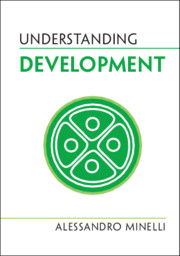Book contents
- Understanding Development
- Series page
- Understanding Development
- Copyright page
- Reviews
- Dedication
- Contents
- Foreword
- Preface
- Acknowledgements
- 1 Defining Development, if Possible
- 2 Cells and Development
- 3 Development as the History of the Individual
- 4 Revisiting the Embryo
- 5 Developmental Sequences: Sustainability versus Adaptation
- 6 Genes and Development
- 7 Emerging Form
- 8 The Ecology of Development
- Concluding Remarks
- Summary of Common Misunderstandings
- Classification
- References and Further Reading
- Index
8 - The Ecology of Development
Published online by Cambridge University Press: 29 April 2021
- Understanding Development
- Series page
- Understanding Development
- Copyright page
- Reviews
- Dedication
- Contents
- Foreword
- Preface
- Acknowledgements
- 1 Defining Development, if Possible
- 2 Cells and Development
- 3 Development as the History of the Individual
- 4 Revisiting the Embryo
- 5 Developmental Sequences: Sustainability versus Adaptation
- 6 Genes and Development
- 7 Emerging Form
- 8 The Ecology of Development
- Concluding Remarks
- Summary of Common Misunderstandings
- Classification
- References and Further Reading
- Index
Summary
Two properties – robustness and plasticity – characterize development as the bridge between genotype and phenotype. Developmental robustness is the capacity of a developmental system to produce the same phenotype irrespective of changes in external conditions (and, to some extent, of genetic change). Developmental plasticity is the production of different phenotypes by individuals with the same genotype, as a response to exposure to different external conditions. This outcome is called polyphenism if there is a clear discontinuity between the produced phenotypes, e.g. male vs. female in the alligator, in response to different temperatures in a critical phase of embryonic development. Phenotypic differences are not restricted to morphology, but extend to the temporal dimension, e.g. in the annual, biennial or perennial habit of plants, or in their flowering calendar. Periodization of development is to some extent arbitrary even in organisms where the individual’s life is punctuated by events such as moults in arthropods. The determination of age is also to some extent arbitrary. Senescence is conspicuous (often dramatic) in many organisms, but apparently non-existent in others.
Keywords
- Type
- Chapter
- Information
- Understanding Development , pp. 135 - 151Publisher: Cambridge University PressPrint publication year: 2021



